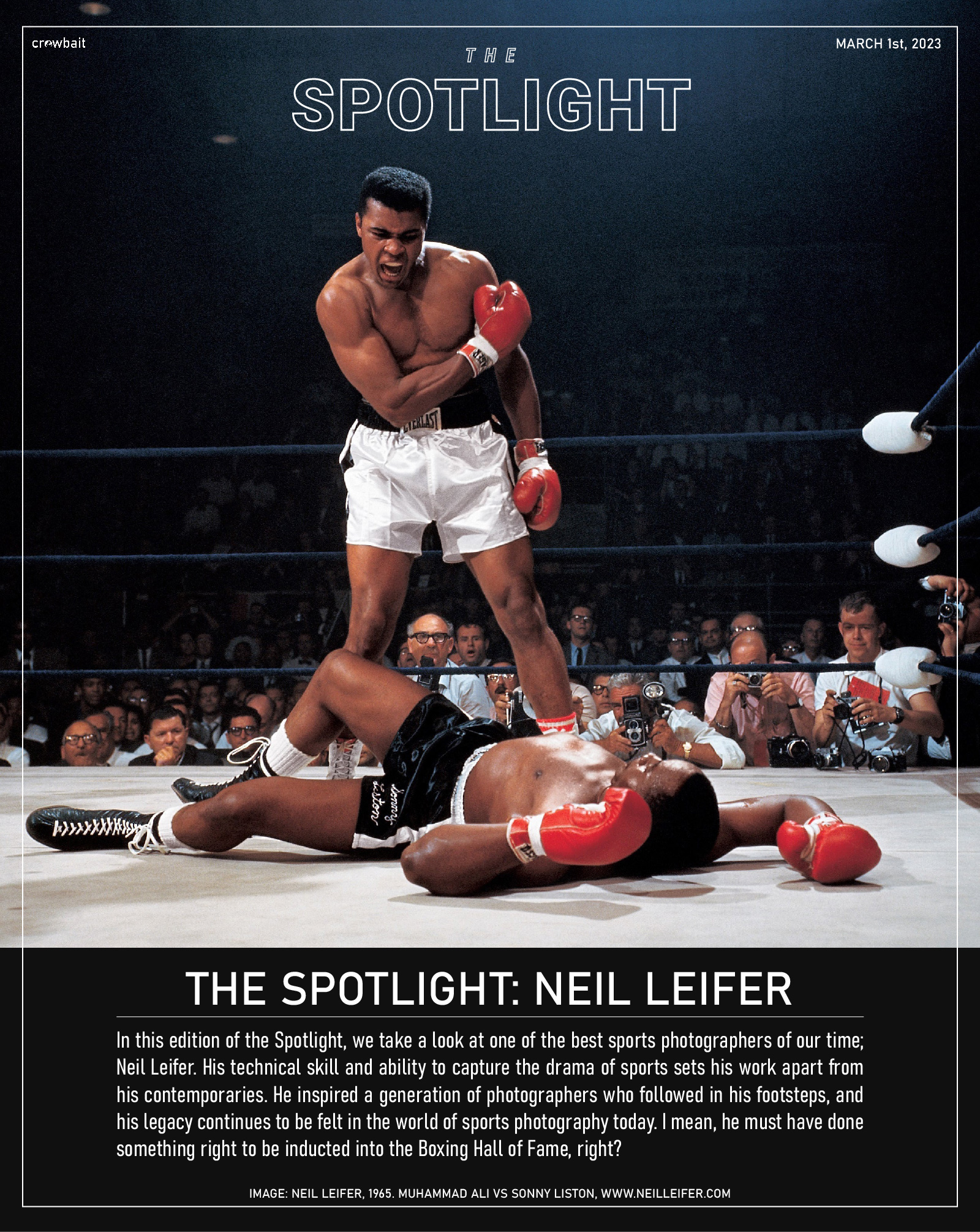
"Sometimes the simplest pictures are the hardest to get."
So, who is Neil Leifer?
Neil Leifer is, without question, one of the most celebrated sports photographers of all time. He has immortalized several of the most iconic moments in sports history, and his work has been displayed in galleries, museums, publications and homes around the world. The images he has captured over his illustrious career are a testament to his undeniable skill, his unwavering dedication to the craft, and a relentless pursuit of unique imagery.
As a child, he was interested in sports and photography, so naturally he combined these two passions. Leifer unofficially began his career as a photographer at the age of 16, when he started taking pictures for his high school newspaper. He continued to pursue photography while attending college, eventually securing a job as a staff photographer for Sports Illustrated in 1960 at the age of 18. Leifer's first major assignment for the magazine was to cover the 1960 Summer Olympics in Rome, which would mark the official beginning of his long and successful sports photography career.
Leifer's work is universally recognized and widely celebrated. Over his 60 year career, his work was a regular feature in nearly every major national magazine, most often in Time, Sports Illustrated and People with his photographs making up over 200 covers. Further to his innumerable publications, he earned several awards and accolades, including being the first photographer ever to be inducted into the Boxing Hall of Fame.
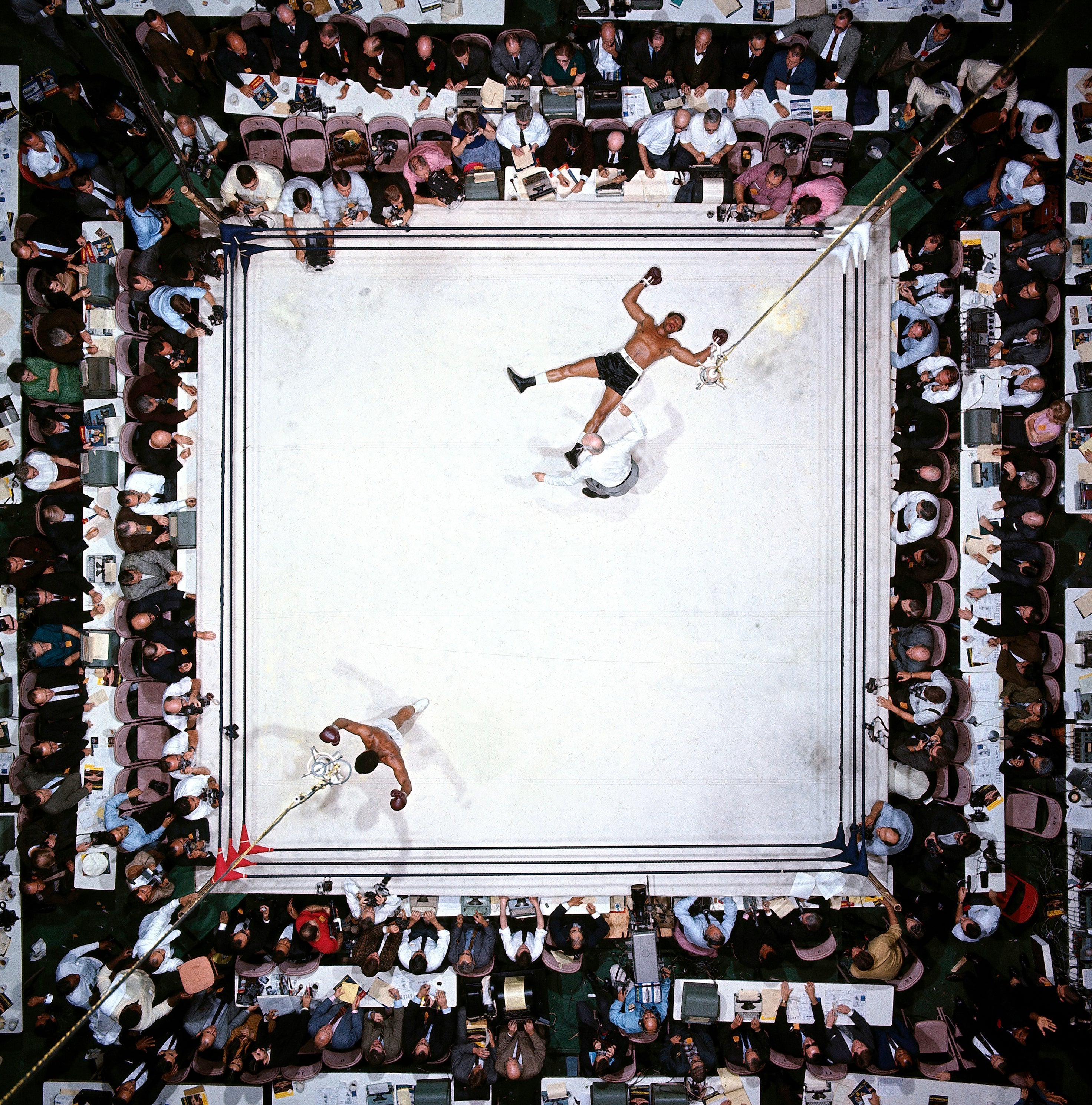
https://neilleifer.com/products/muhammad-ali-vs-cleveland-williams-aerial
What is his Photographic Approach?
Leifer's approach to photography throughout his career was unique, but simple: in order to capture great images, you have to be in the right place at the right time. In pursuit of that, he was always looking for ways to get closer to the action, often resulting in him employing unconventional methods to get the shot he wanted, like scaling basketball hoops to get a bird's-eye view of the game, riding in the pace car at the Indy 500 to get a unique perspective of the race or climbing on to the starters gates to get the opening shot of an important horse race. If there was a shot to be had, Leifer found a way to make it happen.
Achieving a unique perspective is a key element, but it's only one third of the job. Luckily for Leifer (and the rest of the world) he possesses an ability to not only seek out the right place, but to then compose the image impactfully and finally expose the image with perfection. His eye for dramatic angles is matched with and enhanced by his strong compositional skills. Leifer's images often feature strong diagonal lines and asymmetrical compositions, creating a sense of movement and visual tension. He is well known for his use of dramatically low and high angles in combination with wide-angle lenses, which allows him to capture the action from unique perspectives while conveying a sense of immediacy, intimacy and drama.
Neil Leifer has often said that his goal as a photographer is to capture the single "decisive moment;" that split-second when everything comes together to create a truly memorable image. His ability to do so comes from his innate sense of timing and anticipation, that has been demonstrated throughout his career. Whether it is the moment a boxer lands a knockout punch, a football player dives into the end zone, or even a fighter jet leaving the carrier, Leifer is able to freeze tim while simultaneously capturing the atmosphere and the essence of the moment in a single frame. This ability to capture the defining moment consistently made Leifer's work stand out from the rest of the photographers in his field.
Another important aspect of Leifer's photographic style is the way in which he uses light and shadow to create and enhance drama and contrast. He often shoots in low light conditions, which can create a moody, atmospheric effect in his images. His further use of black and white photography adds to this effect, with stark contrasts and deep shadows adding depth and dimension to his images.
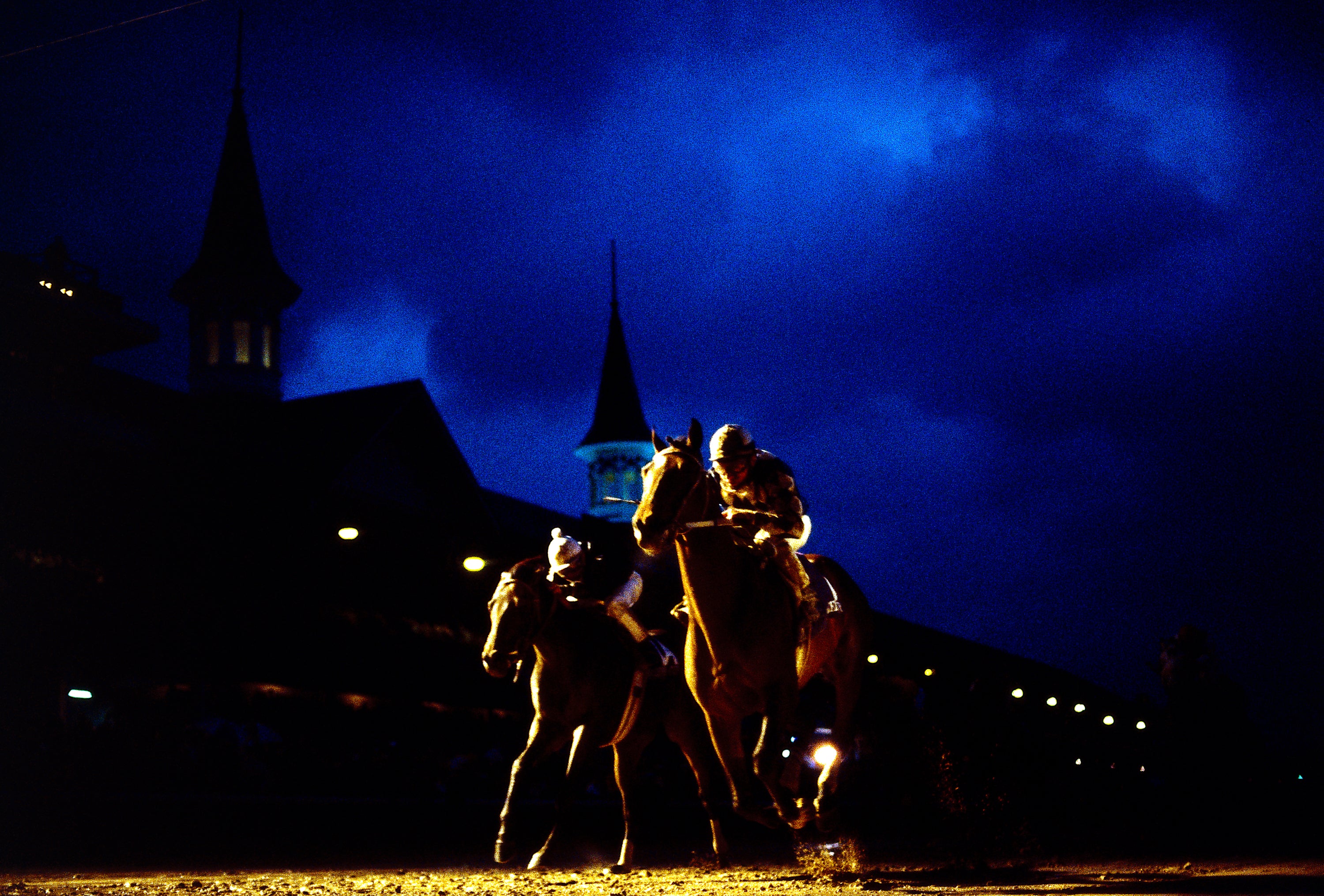
https://neilleifer.com/products/chris-mccarron-aboard-alysheba
Leifer's images are markedly distinguished by their emotional impact. He has a talent for capturing not just the action, but also the emotions of the athletes and spectators. His images often convey a sense of excitement, tension, or triumph, reflecting the emotional intensity of the moment and it is all due to the artistry of his technical and artistic decisions.
One of Leifer's most famous photographs is his shot of Muhammad Ali standing over Sonny Liston after knocking him out in their second fight 1965 (cover photo). Leifer was able to capture the moment perfectly, with Ali standing over Liston, staring down at him asserting his dominance visually and vocally. A combination of preparation, skill, timing and luck came together to make this image possible. Leifer recounts spending the three days prior hanging lights and fighting for electrical supply to create a studio like atmosphere. He knew from previous fights that the crowd would be primarily male, and by the time the main event of Ali and Liston came up the arena would be hanging with cigarette and cigar smoke. Knowing this, he strategically placed his lights and himself in a position to capture the action but to frame it against the darkest arena background, and allow the light to pass through the smoke, adding a dramatic haze and blue color cast across the top of the image. The final important decision came when Leifer opted to shoot in colour, understanding that for his vision to come to fruition colour would be key. In fact, another photographer, John Rooney seated to Neil’s left, captured almost the exact same image, but in black and white. It was this black and white image that was run on the front pages of newspapers in the following days, and even won an award for the best sports photo of 1965. But over time, the dramatic atmosphere, clarity, punch and depth of Leifer’s colour photo established itself as the iconic image of that decisive moment, and for good reasons. In fact, the stories and reasons behind the two images is one for another time.
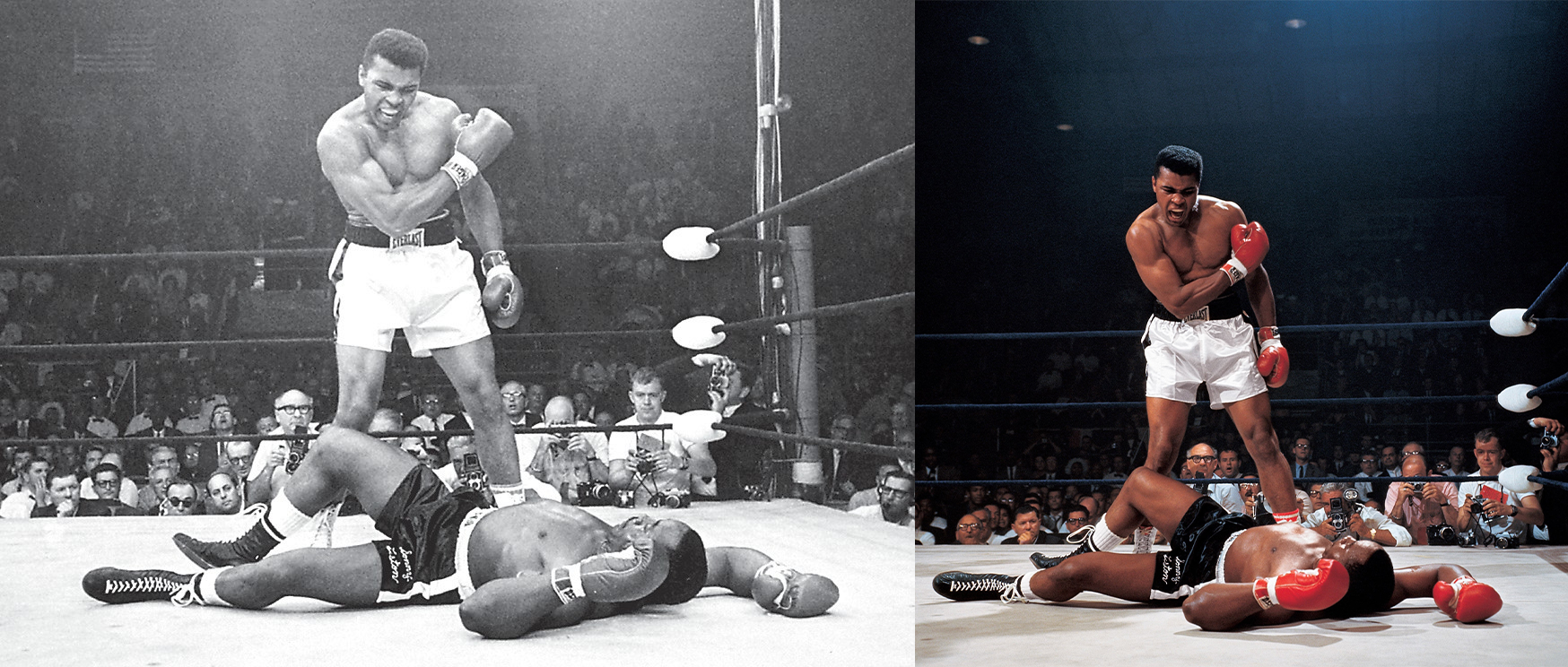
Side by side comparison by John Rooney/AP image(left) and Neil Leifer's Image (right).
Regardless of the backstory, when you look at the image, you immediately understand what it represents, whether you know anything about the boxing match or not. It's about triumph, failure, shock and awe, all at once. This single image is so rich, powerful, captivating and inspiring that it has become an icon of the sport of boxing and is one of the most recognized sports photographs ever taken. Though it was taken in 1965, today single signed copies sell for nearly $30,000.
Leifer's photographs are not just beautiful; they tell a story. He’s always looking for ways to capture the emotion and drama of the events he photographs. At one point, with the permission of Major League Baseball, Leifer went through the trouble of figuring out a way to rig a camera inside second base in an attempt to capture season-leading base stealing leader Maury Wills stealing another. He even went as far as to speak to Wills beforehand, confirming that if he got on first base, Maury would indeed slide headfirst into second, knowing Leifer’s camera would be waiting to capture it like never before. Unfortunately for Leifer and Maury, Willie Davis reached first base before Wills, then proceeded to steal second, sliding feet first into second base destroying the rigged base and camera system. Leifer was called onto the field to pick up the pieces and a regular base was set in play, promptly ending Leifer’s meticulously planned experiment. However, Leifer never missed an opportunity. He saw the play unfolding, anticipated what the result may be and took his opportunity to capture an image that is truly unrepeatable.
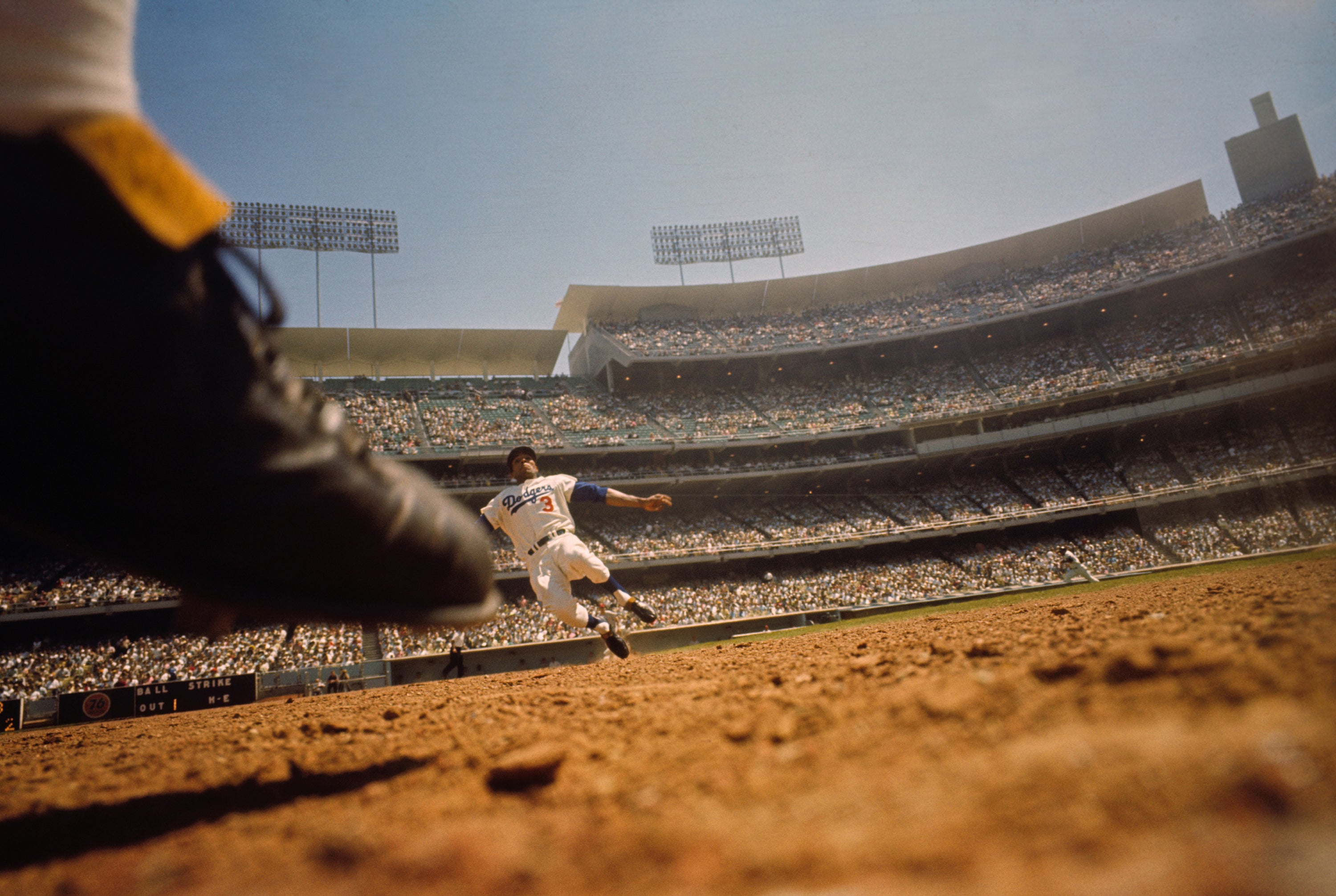
https://neilleifer.com/products/willie-davis-sliding-into-second-base-limited-edition-signed-print
"You can't get away from the element of luck in sports photography;
but what makes a great sports photographer is that, when we get lucky, we don't miss."
Leifer's Legacy
Leifer's work has had a lasting impact on sports photography. He was a pioneer in the field, and his photographs have inspired countless photographers to follow in his footsteps. His images have become a part of the cultural lexicon, and they continue to be celebrated and admired by sports fans and photography enthusiasts alike. Leifer's approach to photography focused on capturing the moment, emotion and atmosphere of the monumental and mundane alike.
Overall, Neil Leifer's approach to sports photography was rooted in his deep love of sports and his desire to capture the human drama and emotion that make sports so compelling. He was a master of his craft, with an innate sense of composition, timing, and lighting, and he was able to capture even the most fleeting of moments with remarkable clarity. His legacy continues to be felt in the world of sports photography today, and his photographs remain some of the most iconic and memorable images in sports history.
Sources
Bissinger, Buzz. "The Best Sportswriter in America is Not Who You Think." The New York Times Magazine, November 21, 2018, https://www.nytimes.com/2018/11/21/magazine/the-best-sportswriter-in-america-is-not-who-you-think.html.
Carlson, Michael. "Neil Leifer obituary." The Guardian, November 21, 2021, https://www.theguardian.com/sport/2021/nov/21/neil-leifer-obituary.
Leifer, Neil, and Dave Anderson. The Best of Leifer. New York: Viking, 1987.
Leifer, Neil, and David Fischer. Guts & Glory: The Golden Age of American Football, 1958-1978. New York: TASCHEN, 2016.
Leifer, Neil, and Gabrielle Balkan. Guts and Glory: The Golden Age of American Football, 1958-1978. New York: Taschen, 2017.
Leifer, Neil. Relentless: The Stories Behind the Photographs. New York: Taschen, 2018.
Moore, Charles. "The Greatest Sports Photographer of All Time: Neil Leifer." Sports Illustrated, March 11, 2014. https://www.si.com/more-sports/2014/03/11/greatest-sports-photographer-all-time-neil-leifer.
"Neil Leifer." International Jewish Sports Hall of Fame. Accessed June 24, 2021. https://jewishsports.org/jewish-athletes/neil-leifer.
"Neil Leifer." Joseph A. Sprague Memorial Award Recipients. National Press Photographers Association. Accessed June 24, 2021. https://nppa.org/page/23831.
"Neil Leifer: About." Neil Leifer Photography. Accessed June 24, 2021. http://www.neilleifer.com/about/.
"Portraits of a Lady." IMDb. Accessed June 24, 2021. https://www.imdb.com/title/tt0122837/.
Rabinovitch, Simon. "Neil Leifer: 'The best picture I ever took'." BBC News, July 19, 2012, https://www.bbc.com/news/magazine-18814370.
Rothstein, Edward. "A Rivalry in Which Everyone Wins." The New York Times, February 4, 2007. https://www.nytimes.com/2007/02/04/arts/design/04roth.html.
"The Greatest Sports Photos of All Time." ESPN.com. Accessed June 24, 2021. http://www.espn.com/espn/photos/gallery/_/id/8088737/image/6/neil-leifer-liston-alis-canvas-1965.
"The Top 10 Best Boxing Photographs of All Time." The Ring, June 27, 2019. https://www.ringtv.com/photos/top-10-best-boxing-photographs-time/#/slide/2.
